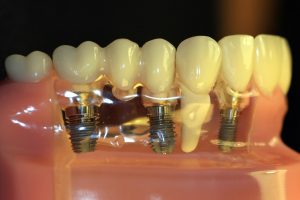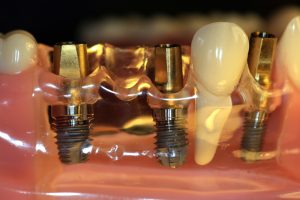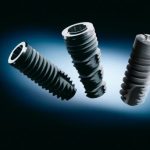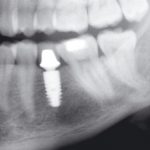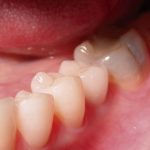Implants
The dental implants were first used in 1965 in Sweden. They survived for more than 20 years. Since then, missing teeth can be effectively supplemented with the titanium implants, which efficiency is very high. The implant replaces the lost tooth root. It is a pillar for the crown, bridge or attachment for overdentures.
Currently there are many companies producing implants. The best implant systems, which are used in Indexmedica SA enjoys an excellent reputation among implantologists worldwide.
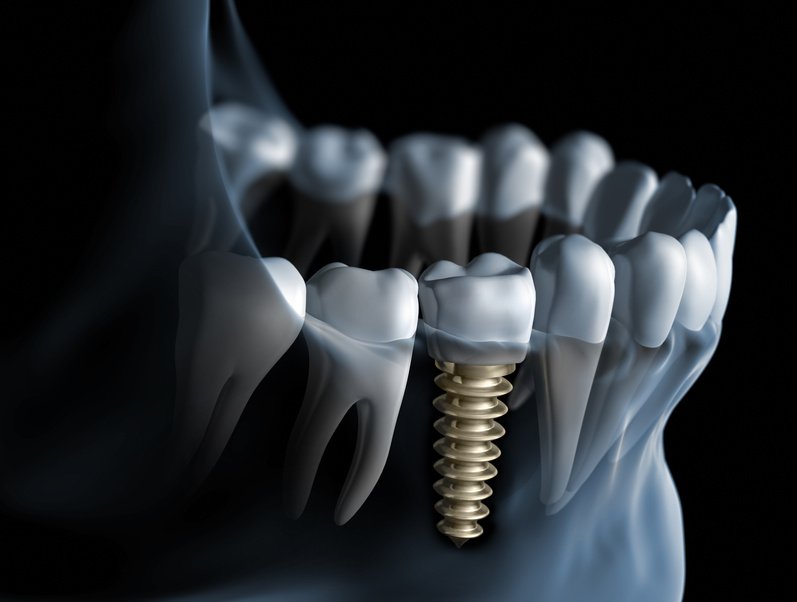
Prosthetic restorations on implants
The discovery of osseointegration and the use of dental implant for the first time in 1965, revolutionized the face of dental prosthetics, opening the way for an entirely new therapeutic solutions. Using dental implants as a foundation, you can plan a variety of dental restorations:
- complete overdenture type dentures,
- bridges that restore the total or partial lack of teeth
- crowns on implant that reconstruct the single-tooth gaps.
Watch our 3D animations which explain all methods how to replace missing teeth with implants:
- Single tooth replacement
- Multi-teeth replacement
- Full arch reconstruction on 8 implants
- Full arch reconstruction on 14 implants
- Full arch reconstruction on 2 implants + 1 beam
- Full arch reconstruction on 4 implants + 3 beams
- Full arch reconstruction on 4 implants + locators
Computer-planned treatment with implants
Accurate diagnostics and treatment planning are necessary to achieve satisfying treatment results. Our lab is equipped with a state-of-the-art cone beam computer tomograph, produced by KODAK and with a digital X-ray and radiovisiography machine. The pictures are ready immediately and are handed out to the patient either on a CD or on photographic paper. We make 3D CT scans of your teeth, jaws and paranasal sinuses.
At INDEXMEDICA dental clinic nothing is left to chance, that’s why we have introduced computer-planned implant treatment. Patients who are suitable for implants, have a CT scan examination of upper or lower jaw done at our fully digital X-ray room with our KODAK 9300 CT scanner. Thanks to the special KODAK software the surgeon can precisely analyze the structure and size of the natural bone and assess the type, size, amount and area of implantation, to optimize the quality and durability of treatment results and to minimize potential risk of destroying important anatomic structures e.g. nerves. Thanks to the 3D model of patient’s jaws it is also possible to assess possible indications for Guided Bone Regeneration (so called bone grafting procedures) and for lifting of the sinus (so called sinus – lift). Both procedures are used in case when there is not enough natural bone left. Additionally, planning of the dental treatment and 3D reconstruction in the software allows the patient to see his own jaws with virtually placed implants and new teeth before the treatment.
The best quality of 3D CT scans and minimal radiation dose – your safety is our priority
- Scanning of teeth, upper and lower jaw as well as sinuses
- Endodontic microtomography – pictures of single teeth in the highest resolution, especially helpful in difficult endodontic (root canal) treatments
- 3D Simulations of treatment with implants, bone grafting, as well as the course of vital structures (eg. nerves)
Modern treatment with implants, with application of special implants, biomaterials, Guided Tissue Regeneration is safe, effective and makes it possible to achieve perfect aesthetic and functional effects. Several years ago millions of people with missing teeth could only have a bridge done, now they have choice!
The demand is huge: on average each adult has a 2,7 teeth missing and almost 2 millions of elderly people don’t have any teeth at all. What is the best strategy to close the gaps in an aesthetic way? Financial and technological efforts in case of an ordinary bridge and an implant are diverse. Especially, when the patient doesn’t have enough bone.
In case of a young patient, who will replace one missing tooth with a 3-unit bridge, it will be necessary to exchange the bridge two or three times in a lifetime because of caries or tooth break. The initial cost of replacing one missing tooth with an implant can be higher than the cost of a 3-unit bridge, but already after 7 years the costs become even. Despite the fact, that implants initially seem to be more expensive, when we add all the expenses connected with traditional prosthetic treatment, most of us will agree that it is worth investing in implants.
Thanks to new technologies, virtual Op Planning, painlessness during the implantation and Guided Bone Regeneration, many people became free from prejudice against implants. New Nano-Titanium surfaces anchor the artificial teeth roots in the jaw bone very tightly and thanks to this their durability raises. According to recent studies the probability, that the implant retained bridge will stay stable in the jawbone after 10 years is approx. 93%. An ordinary crown fixed on a natural tooth stays in place in 87% of cases .
The crucial progress of the dentists revolutionize the perception of „third teeth”, which regarded as a taboo subject in past, became nowadays thanks to implant-supported restorations a status symbol. Crowns on implants look absolutely similar to natural teeth and they usually look even better than the original. Beautiful teeth are also crucial when looking for a good job. Research studies prove that just in the first seconds of a conversation the interlocutor looks on teeth. If a charming smile appears there, its owner can be sure, it will be a success. Who sends a manager with yellow plaque on teeth or with a whole in a tooth to a client?
Because of low financial costs bridges are still considered to be a standard treatment in case of situation when single teeth are missing. Bridges are used in 8 out of 10 cases. But in this case the adjoining teeth also need to be grinded. So often it’s needed to damage two healthy teeth to replace the one that is missing and the experts have stated that saving healthy teeth as the main goal in dentistry. A healthy tooth can perfectly carry the chew forces into the bone. If a tooth is missing, the bone vanishes because of lack of load. Bone loss makes the lips thinner, the chin becomes a receding chin. These discoveries have contributed to the fact that implants are often used to protect the bone. Even if not as good as a natural tooth, nevertheless they carry enough force on the jaws to save the bone and an appropriate shape of the face.
The procedure is easy, especially if only a single tooth is missing. At the beginning the diagnosis is based on the analyze of the panoramic X-ray. In case when the patient is suitable for implants, a CT scan of the jaws is done to confirm the previous assessment and to select an appropriate size, amount and position of the implants. The surgeon need approx. 20 – 40 minutes to place a single implant, without bone grafting. If the 8 – 15 mm Titanium screw is inserted in the jaw bone the dentist stitches the wound. If a front tooth is missing, the patients gets a temporary appliance for the healing period.
On the day of implantation the patient takes painkillers and makes cold compresses what helps to minimize the swelling and pain after the operation. The Titanium screws grow into the jaw bone after 2 – 6 months. After this time the surgeon prepares the surface over the implant and makes place for a new tooth which consists of an abutment and crown. After approx. 2 weeks after this visit the crown can be fixed. During previous visits impressions have been made to enable doing the crown in a dental laboratory.
The general rule is: the steadier the basis, the better will the implant „take” Most often 2 methods of bone regeneration (so called bone grafting) are used:
- If it’s possible the surgeon gets bone fragments from patient’s natural jaw bone with a special instrument (bonescraper)
- If there is not enough bone, a new artificial bone material can be used without any problems
Nowadays, one of the most controversial technology is the method called „Teeth-in-one-hour” available also in Poland. In this case the dentist puts crowns immediately after placing the implants. This has been regarded as a great malpractice until now. The patients leave the surgery and are able to bite – it’s many people’s dream. This method is possible thanks to a previous 3D-planning. The computer scanns the mouth and impressions of the jaw bones. The data is sent electronically to the dental laboratory, where an individual model of somebody’s mouth is made. A special splint enables the surgeon to drill the bone very precisely thanks to specially marked holes. In this way bone grafting and gum damages should be avoided. Crowns are put on the new, artificial teeth roots and you can bite with these crowns immediately – so at least the theory. And it’s the „immediately loading of implants” the controversial point, because in case of failure, all the implants can fall out. The reason why implants fall out are a.o. the micromovements. If the tooth pushes on the wound in the jaw bone the implant does not grow into the jaw bone but grows into the soft tissue. In case of implants each micrometer is important. This situation can be compared with a just operated leg – it’s clear that the patient won’t be ale to run immediately. Because of this, it’s recommended to use this method only in few selected cases.
A less controversial method with a minimized risk of implants loss is the one which consists of fixing the final teeth after 3 – 6 months and after implants placing the patients gets a temporary denture or temporary bridge.
If you don’t close gaps with a prosthetic restoration, you have to be aware of following consequences:
- ageing, losing of youth appearance
- increased amount of mimic wrinkles
- disturbed lips’ harmony and profile
- shortened distance between nose and chin, which makes the face look distorted
- problems with chewing the food
- alimentary problems due to incorrect chewing
- faster bone loss in upper and lower jaw because of lack of prosthetic restorations
Advantages of replacing missing teeth with implants:
- therapy which functionally and aesthetically mimics the nature
- face expression and aesthetic are maintained
- possible reducing of bone loss in implants area
- correct chewing made possible
- prosthetic restorations on implants are more stable, compared to full or partial dentures
- improved quality of life







